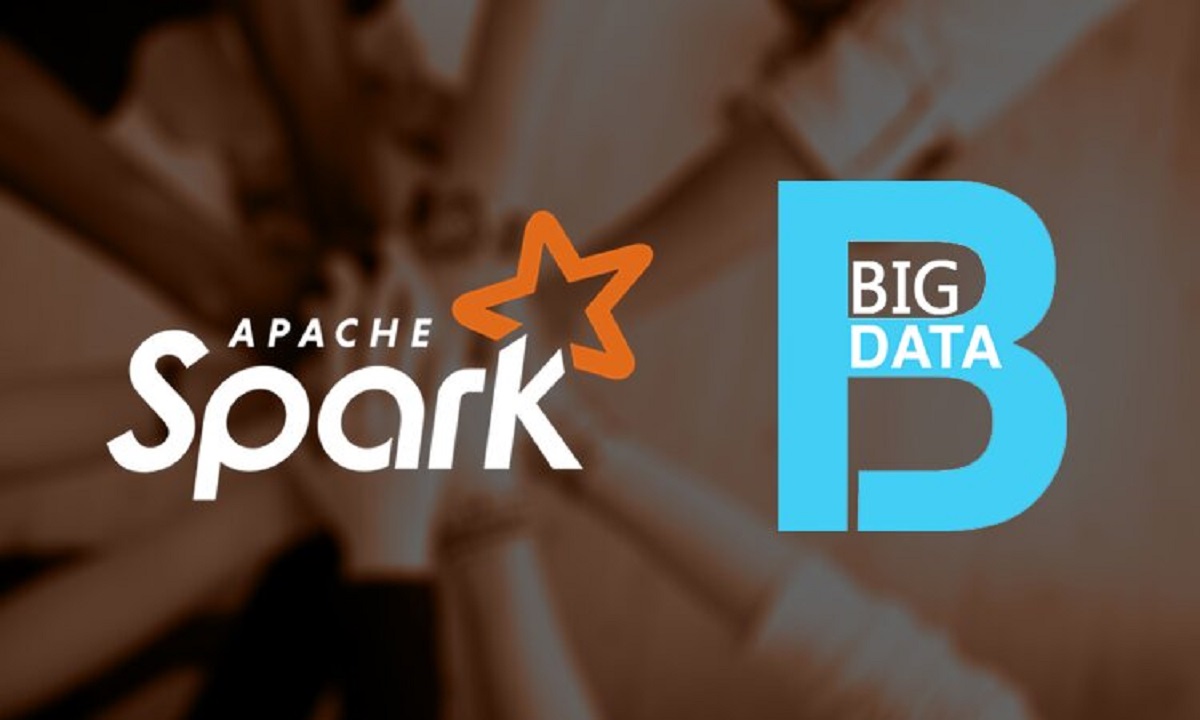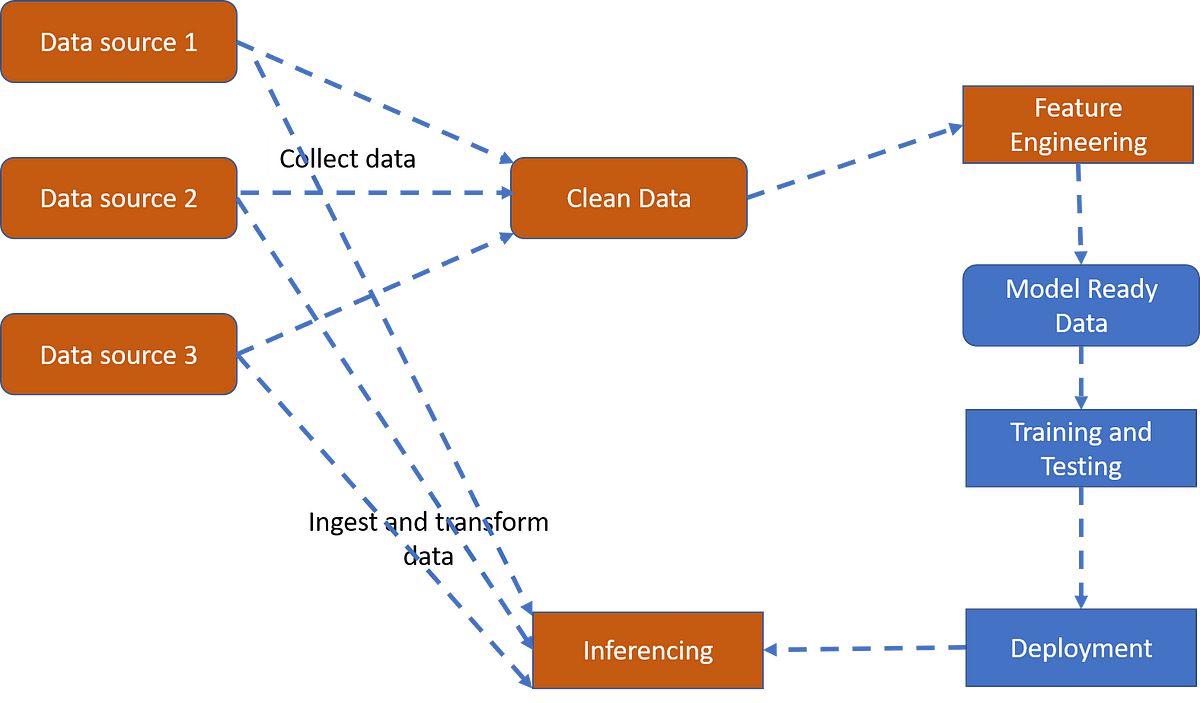Introduction
Welcome to the world of big data, where massive amounts of data are generated and processed every second. As data volumes continue to grow exponentially, organizations face the challenge of effectively managing and processing this data to gain insights and make informed decisions. This is where technologies like YARN come into play.
YARN, which stands for Yet Another Resource Negotiator, is a core component of Apache Hadoop, an open-source framework for distributed processing of large datasets. YARN serves as a resource management platform that enables efficient utilization of cluster resources and allows multiple data processing engines to coexist and operate simultaneously within a Hadoop ecosystem.
YARN was introduced in Hadoop 2.x as a major architectural overhaul, replacing the original Hadoop MapReduce framework as the primary resource management and job scheduling system. The main objective of YARN is to provide a flexible and scalable infrastructure for running various distributed computing applications in a Hadoop cluster.
With YARN, organizations can harness the power of big data by running diverse workloads such as batch processing, real-time processing, interactive queries, and machine learning algorithms on the same cluster, simultaneously. This eliminates the need for separate clusters for different workloads, leading to better hardware utilization and cost savings.
In this article, we will explore the key components and working principles of YARN, discuss its importance in the world of big data, highlight its advantages and limitations, and identify various use cases where YARN excels. Let’s dive deeper into the world of YARN and discover how it revolutionizes big data processing.
What Is YARN?
YARN, which stands for Yet Another Resource Negotiator, is a key part of Apache Hadoop’s architecture. It serves as a resource management platform that allows multiple data processing engines to run concurrently in a Hadoop cluster. YARN provides a flexible and scalable infrastructure for running various distributed computing applications, enabling organizations to maximize the utilization of their cluster resources.
Before YARN, Hadoop used the MapReduce framework for both resource management and data processing. However, this approach had certain limitations, such as the inability to support different data processing models and parallelize workloads efficiently. YARN was introduced as a replacement for the MapReduce framework to address these challenges and provide better resource management capabilities.
At its core, YARN decouples resource management from data processing in Hadoop. It introduces two core components:
- ResourceManager (RM): The ResourceManager is responsible for managing the resources available in the cluster and allocating those resources to applications. It receives resource requests from the ApplicationMaster and ensures the fair allocation of resources among different applications.
- ApplicationMaster (AM): The ApplicationMaster is responsible for managing the execution of a specific application. It negotiates resources from the ResourceManager and monitors the progress of the application. Each application running on YARN has its own ApplicationMaster.
This separation of concerns allows YARN to support various data processing models, including not only traditional batch processing using MapReduce but also real-time processing, interactive queries, and machine learning workloads. YARN acts as a substrate for running multiple processing engines, such as Apache Spark, Apache Flink, Apache Hive, and Apache HBase, among others.
YARN’s architecture is designed to be scalable, fault-tolerant, and dynamic. It transparently handles hardware failures and automatically reallocates resources to ensure proper execution of applications. Moreover, it dynamically adjusts resource allocations based on the requirements of different applications, enabling efficient utilization of cluster resources.
In summary, YARN is a resource management platform that decouples resource management from data processing in Apache Hadoop. It introduces a flexible and scalable infrastructure for running various distributed computing applications, making it a crucial component in the world of big data.
Why Is YARN Important in Big Data?
In the world of big data, where organizations encounter massive volumes of data, the efficient management and processing of this data is of paramount importance. YARN plays a crucial role in ensuring the effective utilization of resources and enabling multiple data processing engines to coexist and operate simultaneously within a Hadoop cluster. Here are some key reasons why YARN is important in the context of big data:
- Flexibility: YARN provides a flexible infrastructure that supports various data processing models. It allows organizations to run different workloads, such as batch processing, real-time processing, interactive querying, and machine learning, on the same cluster. This flexibility eliminates the need for separate clusters for different workloads, leading to cost savings and better resource utilization.
- Scalability: YARN is designed to be highly scalable, allowing organizations to scale their data processing capabilities as their data volumes grow. It can dynamically allocate and deallocate resources based on the demands of different applications, ensuring efficient resource utilization and maximizing processing power.
- Resource Management: YARN’s resource management capabilities are crucial in big data environments. It efficiently manages the available cluster resources and allocates them to different applications based on their requirements. This ensures fair resource allocation and prevents applications from monopolizing cluster resources.
- Parallel Processing: YARN enables parallel processing of data, which is essential for handling large volumes of data efficiently. By allowing multiple data processing engines to run concurrently, YARN enables organizations to leverage the power of distributed computing and process data in parallel, resulting in faster and more efficient data processing.
- Higher Application Availability: YARN’s fault-tolerant design ensures higher application availability in the face of hardware failures. In the event of failures, YARN automatically reallocates resources and restarts failed tasks, minimizing the impact on running applications and providing a more reliable and resilient environment for big data processing.
- Integration with Ecosystem: YARN seamlessly integrates with various components in the Hadoop ecosystem, such as Apache Spark, Apache Hive, Apache HBase, and more. This integration allows organizations to leverage the capabilities of these processing engines while benefiting from YARN’s resource management features, providing a unified and efficient platform for big data processing.
Overall, YARN plays a vital role in the big data landscape by providing a flexible, scalable, and efficient resource management platform. Its ability to support multiple data processing models, ensure fair resource allocation, and handle failures makes it a fundamental component for organizations seeking to harness the power of big data and derive valuable insights from their data.
How Does YARN Work?
YARN (Yet Another Resource Negotiator) operates on a distributed computing model in which different components work together to manage resources and execute applications within a Hadoop cluster. Here is a breakdown of how YARN works:
- Client Submission: The process begins with a client submitting an application to YARN. This application includes necessary information, such as the application’s resource requirements and the specific container environment it needs to run.
- ResourceManager (RM) Allocation: The ResourceManager receives the application submission and negotiates resources according to the specified requirements. It manages and allocates resources available across the cluster, ensuring fairness and efficient utilization of resources.
- ApplicationMaster (AM) Activation: Once the resources are allocated, an ApplicationMaster is created specifically for the submitted application. The ApplicationMaster is responsible for negotiating with the ResourceManager to obtain the necessary containers to run and coordinate the execution of different tasks within the application.
- Container Execution: The ResourceManager allocates a set of containers to the ApplicationMaster, which starts the execution of the application’s tasks. Each container is a separate entity that represents allocated resources, such as CPU and memory, on a specific node in the cluster.
- Task Execution: Within each container, individual tasks associated with the application are executed. These tasks can be MapReduce jobs, Spark tasks, or any other data processing operations. The tasks make use of the allocated resources in the container to perform their computations.
- Communication and Monitoring: Throughout the execution process, the ApplicationMaster communicates with the ResourceManager to provide updates on the progress of the application. It also monitors the health of the containers and handles any failures that occur. If a container fails, the ApplicationMaster requests the ResourceManager to reallocate the necessary resources and restart the failed tasks.
- Completion and Resource Reclamation: Once all the tasks are completed, the ApplicationMaster informs the ResourceManager about the successful completion of the application. At this point, the ResourceManager releases the allocated resources back to the cluster, making them available for other applications.
This cyclic process allows YARN to dynamically manage the allocation and deallocation of resources based on the specific needs of each application. It ensures efficient utilization of the cluster’s resources and provides fault tolerance by automatically recovering from failures.
YARN’s modular and flexible design enables it to support various data processing engines within the Hadoop ecosystem. The ability to run different types of workloads, such as batch processing, real-time streaming, and interactive querying, on a unified infrastructure makes YARN a powerful and versatile resource manager for big data processing.
Key Components of YARN
YARN (Yet Another Resource Negotiator) consists of several key components that work together to manage resources and execute applications in a distributed computing environment. These components play distinct roles in the overall functioning of YARN. Let’s explore the key components of YARN:
- ResourceManager (RM): The ResourceManager is the central authority in YARN’s architecture. It is responsible for managing and allocating resources across the cluster. The RM receives resource requests from application clients, negotiates resources with the NodeManagers, and ensures fair resource allocation to different applications running on the cluster.
- NodeManager (NM): The NodeManager is present on each machine (node) in the cluster and is responsible for managing resources on that node. It communicates with the ResourceManager to acquire resources, monitors resource usage, and launches and manages application containers on the node.
- ApplicationMaster (AM): The ApplicationMaster is created for each application and is responsible for the management and coordination of the application’s execution. It interacts with the ResourceManager to negotiate resources, monitors the application’s progress, and handles failures by requesting resource reallocation and task restarts.
- Container: A container represents an allocated set of resources (CPU, memory, disk, etc.) on a specific node in the cluster. Containers are dynamically allocated by the ResourceManager to the ApplicationMaster, which then runs the application’s tasks within these containers.
- Application Client: The application client is the entity responsible for submitting applications to YARN. It communicates with the ResourceManager to submit applications, monitor their progress, and receive information about the allocated resources.
- Resource Scheduler: The Resource Scheduler is responsible for decision-making related to resource allocation. It operates within the ResourceManager and ensures fair distribution of resources among various applications running on the cluster. The Resource Scheduler uses policies and algorithms to make optimal decisions regarding resource allocation.
- Application Timeline Server: The Application Timeline Server (ATS) provides a historical view of completed applications and their execution details. It collects and stores application-related information, including metrics and events, which can be queried and analyzed later.
These components work together to achieve efficient resource management and application execution in YARN. The ResourceManager and NodeManager handle resource allocation and monitoring, while the ApplicationMaster manages the execution and progress of individual applications. The Resource Scheduler ensures fair distribution of resources, and the Application Timeline Server provides insights into completed applications.
By leveraging these components, YARN provides a scalable and flexible framework for running various distributed computing applications within a Hadoop cluster, making it a critical component in the field of big data processing.
YARN Job Execution Flow
When it comes to executing jobs in YARN (Yet Another Resource Negotiator), there is a well-defined flow that takes place to ensure efficient resource management and successful application execution. Understanding this workflow can provide insights into how YARN handles the execution of jobs within a Hadoop cluster. Let’s explore the YARN job execution flow:
- Job Submission: The process begins with a client submitting a job to YARN. The client specifies the details of the job, such as the input data, the type of processing to be performed, and any specific configuration parameters required.
- Resource Allocation: After receiving the job submission, YARN’s ResourceManager (RM) negotiates resources for the job based on the specified requirements. It considers factors such as available resources, cluster capacity, and fairness policies to allocate the necessary resources for the job.
- ApplicationMaster Launch: Once the resources are allocated, YARN launches an ApplicationMaster (AM) specifically for the job. The AM is responsible for managing the execution of the job, coordinating the tasks, and interacting with the RM for resource negotiation and monitoring.
- Container Allocation: The RM allocates a certain number of containers to the AM. Each container represents allocated resources on specific nodes within the cluster where the job’s tasks will be executed.
- Task Execution: The AM assigns tasks to the allocated containers and starts their execution. The tasks can include mappers, reducers, or any other processing units depending on the job type. The execution of tasks happens within the allocated containers and utilizes the allocated resources.
- Resource Monitoring: Throughout the job execution, the AM monitors the progress of tasks and resource usage within the containers. It communicates with the RM to provide updates on task completion, resource requirements, and any resource failures that need to be handled.
- Task Completion and De-allocation: As the tasks within the containers complete, the AM collects the results and reports them back to the client. Once all the tasks are successfully completed, the AM informs the RM about the job’s completion, and the allocated resources are de-allocated to be used by other jobs.
It is essential to note that YARN supports the execution of various types of jobs, including MapReduce, Spark, Hive, and others. The specific task execution and resource allocation mechanisms may differ slightly depending on the job type and the processing engine being used.
By following this well-defined execution flow, YARN ensures efficient resource utilization, fault tolerance, and the successful completion of jobs within a Hadoop cluster. The separation of resource management from job execution allows for better scalability and flexibility to handle diverse workloads in the big data landscape.
Advantages of YARN
YARN (Yet Another Resource Negotiator) brings significant advantages to the world of big data processing. By decoupling resource management from data processing and providing a flexible and scalable infrastructure, YARN offers various benefits that enhance the efficiency and effectiveness of distributed computing. Here are some notable advantages of YARN:
- Flexibility: YARN enables organizations to run a wide range of workloads on the same cluster. It supports multiple data processing models, including batch processing, real-time streaming, interactive querying, and machine learning. This flexibility eliminates the need for separate clusters, reducing operational costs and improving hardware utilization.
- Resource Utilization: YARN optimizes resource allocation and utilization in a Hadoop cluster. It dynamically allocates resources based on the specific requirements of each application, ensuring efficient utilization of hardware resources. This leads to a higher degree of concurrency and enables organizations to process more data in less time.
- Scalability: YARN scales horizontally, allowing organizations to expand their cluster’s capacity as their data volumes and processing needs increase. Its ability to allocate resources dynamically enables seamless scaling, ensuring that growing workloads can be accommodated without sacrificing performance or availability.
- Multitenancy Support: YARN supports multitenancy by providing a shared infrastructure for multiple concurrent applications. It allows different users or departments within an organization to run their applications on the same cluster, each with its own ApplicationMaster and resource allocation. This consolidation of resources simplifies management, reduces hardware requirements, and promotes collaboration.
- Fault Tolerance: YARN incorporates fault tolerance mechanisms to handle failures gracefully. It automatically monitors and recovers from various failures, such as hardware failures, container failures, or application failures. YARN’s ability to reallocate resources and restart tasks ensures that applications can continue running smoothly despite individual failures.
- Integration with Ecosystem: YARN seamlessly integrates with other components in the Hadoop ecosystem, such as Apache Spark, Apache Hive, and Apache HBase. This integration allows organizations to leverage the capabilities of different processing engines while benefiting from YARN’s robust resource management features. It provides a unified platform for running diverse workloads and simplifies the deployment and management of big data applications.
The advantages offered by YARN empower organizations to efficiently process large volumes of data, gain insights, and make informed decisions. Its flexibility, efficient resource utilization, scalability, fault tolerance, multitenancy support, and integration with the broader ecosystem make it a vital and powerful component in the big data processing landscape.
Limitations of YARN
While YARN (Yet Another Resource Negotiator) provides several advantages for big data processing, it is important to be aware of its limitations. Understanding these limitations can help organizations make informed decisions and mitigate any challenges they may encounter. Here are some key limitations of YARN:
- Complex Configuration: YARN configuration can be complex, especially for organizations that are new to Hadoop and distributed computing. Setting up and configuring YARN requires knowledge of various configuration parameters, resource allocation policies, and security considerations.
- Resource Fragmentation: In certain scenarios, YARN may suffer from resource fragmentation. This occurs when the available resources in the cluster are divided into smaller chunks due to the allocation of containers with varying resource requirements. Resource fragmentation can lead to inefficient resource utilization and reduced performance.
- Overhead: YARN introduces additional overhead in the form of resource negotiation, container management, and inter-component communication. This overhead can impact overall performance and resource utilization, especially for small-scale deployments or applications with low resource requirements.
- Static Resource Allocation: YARN primarily relies on static allocation of resources during job submission. While this approach works well for batch processing jobs, it may not be ideal for real-time or streaming workloads that require dynamic resource allocation to handle varying workloads and bursty traffic patterns.
- Application Interference: In a shared cluster environment, applications running on YARN can potentially interfere with each other’s performance. This interference can arise due to resource contention, uneven workload distribution, or improperly configured resource management policies. Organizations need to carefully tune and manage their cluster to mitigate the impact of application interference.
- Steep Learning Curve: YARN, as part of the Hadoop ecosystem, has a steep learning curve for organizations new to big data processing. It requires an understanding of distributed computing concepts, Hadoop’s architecture, and management of YARN-specific components such as ResourceManager, NodeManager, and ApplicationMaster.
Despite these limitations, mitigating strategies and best practices can help organizations overcome these challenges and maximize the benefits of YARN. Proper configuration tuning, resource optimization, workload characterization, and capacity planning can address many of the limitations associated with YARN.
Overall, it is important to understand that while YARN is a powerful framework for resource management in big data processing, it is not a one-size-fits-all solution. Organizations should carefully evaluate their specific needs and consider the trade-offs before adopting YARN as their resource management platform.
Use Cases of YARN in Big Data
YARN (Yet Another Resource Negotiator) is a versatile framework that has found applications in various big data use cases. By providing a flexible and scalable infrastructure for running diverse workloads, YARN enables organizations to leverage the power of distributed computing and process large volumes of data efficiently. Here are some notable use cases of YARN in the world of big data:
- Batch Processing: YARN’s roots lie in batch processing, and it continues to excel in this use case. Organizations can use YARN to run batch jobs, such as ETL (Extract, Transform, Load) processes, log analysis, and data cleansing. YARN’s ability to allocate resources dynamically and process large datasets efficiently makes it well-suited for batch processing workflows.
- Real-Time Processing: YARN supports real-time data processing, enabling organizations to analyze and respond to data in near real-time. Streaming frameworks like Apache Storm and Apache Flink can be seamlessly integrated with YARN, allowing for continuous data ingestion, processing, and analysis. Use cases for real-time processing with YARN include fraud detection, real-time analytics, and IoT data processing.
- Interactive Analytics: YARN facilitates interactive querying and analytics by running SQL engines like Apache Hive, Apache Impala, or Presto. These engines enable users to explore and query large datasets interactively, enabling ad-hoc analysis and faster data-driven decision-making processes.
- Machine Learning: YARN serves as a powerful platform for running machine learning workloads in big data environments. Frameworks such as Apache Spark’s MLlib and TensorFlow can be integrated with YARN to train and deploy large-scale machine learning models. YARN’s ability to allocate resources efficiently and handle large datasets makes it suitable for machine learning use cases, including predictive modeling, recommendation systems, and anomaly detection.
- Graph Processing: YARN enables graph processing engines like Apache Giraph to process large-scale graphs efficiently. Graph processing is crucial in various domains, including social network analysis, recommendation systems, and network analysis. YARN’s scalability and fault tolerance features make it a valuable resource management platform for graph processing applications.
- Data Warehousing: Organizations can leverage YARN for building data warehousing solutions. By integrating Apache Hive or Apache Impala with YARN, large volumes of structured data can be efficiently processed and analyzed. YARN’s resource management capabilities ensure optimal resource allocation for data warehousing workloads, enabling faster query execution and data retrieval.
These use cases highlight the versatility of YARN and its ability to support a wide range of workloads and processing frameworks. Whether it’s batch processing, real-time streaming, interactive analytics, machine learning, graph processing, or data warehousing, YARN provides a flexible and scalable infrastructure for organizations to unlock the value of their big data.
Conclusion
YARN (Yet Another Resource Negotiator) has emerged as a critical component in the world of big data processing. By providing a flexible and scalable infrastructure for managing resources and executing applications, YARN has revolutionized the way organizations process and analyze vast amounts of data. Throughout this article, we have explored the key aspects of YARN, including its purpose, workflow, components, advantages, limitations, and use cases.
YARN offers several advantages, such as flexibility, efficient resource utilization, scalability, fault tolerance, multitenancy support, and integration with the broader Hadoop ecosystem. It allows organizations to run various workloads, including batch processing, real-time processing, interactive analytics, machine learning, graph processing, and data warehousing, on the same cluster. This consolidation of workloads not only maximizes resource utilization but also reduces operational costs and simplifies management.
However, it is important to be aware of YARN’s limitations, such as complex configuration, resource fragmentation, overhead, static resource allocation, potential application interference, and the steep learning curve associated with distributed computing. Understanding these limitations and implementing appropriate strategies can help organizations mitigate these challenges and optimize the performance of their YARN deployments.
In conclusion, YARN plays a pivotal role in the efficient management and processing of big data. Its ability to handle diverse workloads, ensure resource fairness, and provide fault tolerance makes it a crucial resource management platform. By leveraging YARN, organizations can unlock the value of their data, gain meaningful insights, and make data-driven decisions to stay competitive in the rapidly evolving world of big data.

























